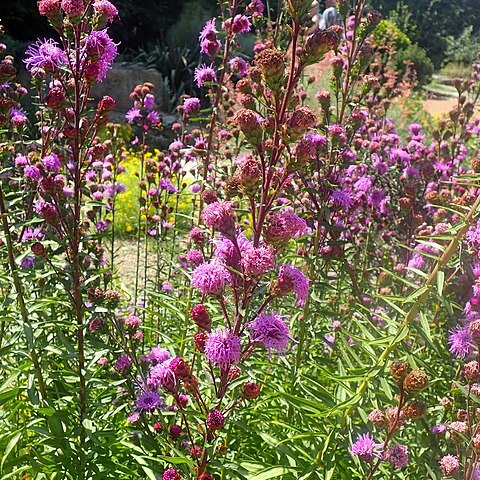Glabrous or hairy, 3–8(–10) dm; lowermost lvs mostly 10–35 cm, long-petiolate, with elliptic to linear-elliptic or broadly oblanceolate blade; heads seldom more than 20(–35), subsessile or more often ascending on arcuate or sometimes spreading peduncles to 5 cm; invol ± hemispheric, 9–17 mm, its bracts appressed to more often loose or sometimes distally squarrose, broadly rounded, often anthocyanic distally, the middle ones only narrowly or not at all scarious-margined, often ciliolate but not erose-lacerate, the innermost ones sometimes more obviously scarious and erose; fls (21–)25–80 per head; cor-tube ± hairy toward the base (or near the middle) within; pappus strongly barbellate; 2n=20. Prairies, open woods, and other dry, open places; Me. to Mich., s. to Pa., Mo., Ark., and in the mts. to n. Ga. Aug., Sept. Three vars.

